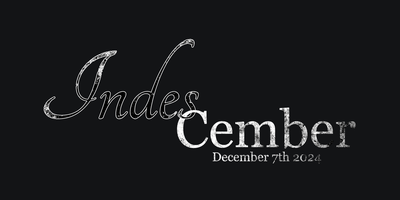- Fool of Swords Newsletter
- Posts
- Burn Your Metaphors
Burn Your Metaphors
And Do It Fast

Okay, so the actual message here is “burn through your metaphors”, but that’s just not as good of a title. Anyhow, wanted to do a little write-up on an issue I see with teachers, particularly the more experienced ones. For anyone who’s taught the same lesson more than once, you’ll find that you tend to gravitate towards specific metaphors in order to get your ideas across. What I’m telling you to do is to burn right through them.
For example, you might tell your students to hold their sword and dagger with the pommels together like a giant Pac Man. In the same lesson you might be trying to communicate that your sword and dagger need to stay in their own lanes so you might tell your students “Don’t cross the streams”. The thing is, your college age students have never been to an arcade and their idea of Ghost Busters stars Kate McKinnon. You can give them all the movie recommendations you want, but watching a forty year old movie (yes, it’s been that long) shouldn’t be required for learning how to sword good. If all of your references are out of date, then so is your teaching.
Same idea applies for references less steeped in pop culture. One of the up and comers at my practice right now came into fencing having played basketball for decades. My understanding of basketball is limited to having seen The Last Dance and Space Jam (the original version). I wasn’t a jock in high school, I was on the debate team. That said, I know that I can frame the idea of “You don’t have the line, disengage and then try again” as “Someone is blocking your shot, this isn’t the moment to shoot for a three” and have it get across.
I’ve also worked with fencers who were avid guitar players before ever picking up a sword. I can play maybe four chords and have no idea how to transition cleanly between them, but I’m more than happy to use my very limited knowledge to try and speak that student’s language. For instance, I might say, “All of the parts of a lunge are like strumming an entire chord. Let’s make sure we have each one of our fingers on the right strings before we try doing the whole thing all at once.” Alternatively I might say, “Here are all of the blows. Think of them as your sheet music before we starting adding in things like keys, time signatures, or all that fancy Italian language you see scribbled in.”
The important thing here, and this is of course easier to do in a one on one setting as opposed to a big class, is that I’m not throwing basketball metaphors at the musician. Those metaphors, for me, are just a tool in order to help get a job done. I’m not in any way emotionally attached to them. If I try explaining an idea one way and see my student’s eyes glaze over I’ll try explaining it in an entirely different way. Then I’ll do it again and again until something sticks. Sometimes this means burning through three or four different metaphors before I get to one that really clicks in.
Same idea applies to movement. If I need someone to square up when they attack on the outside line I might start by telling them to turn their shoulders. If that doesn’t work I might tell them to think of their hips as headlights and to make sure to point them where they want their next action to go. Then if that one doesn’t set in I might instead try getting them to think about turning their foot out just a bit. At the end of the day the shape I want them to settle into is the same, certain people just cue off thinking consciously about different body parts. I might never think explicitly about moving my hips, but that doesn’t mean they’re staying still. Just because I think of that turn as coming from my left shoulder also doesn’t mean my student will think of it the same way.
Taking this to the next level, we can also apply the same idea to class as a whole. Maybe your default is that after drills you have the junior students pair off with the senior ones and then rotate every two minutes. For some folks the ability to try out what they’re doing against a wide variety of opponents will help them. For others, though, two minutes might not be enough for them to get the feedback they need and now they’re just getting pummeled in two minute increments without having any idea what they’re doing wrong. These two examples could also be describing the same student but on different days. Even if you’re the most highly respected instructor in you discipline, that doesn’t mean that your classes are perfectly set up and that you're employing the one format to rule them all in your weekly classes.
Something in the same vein I’ve seen more than once are instructors/schools as a whole that are overly attached to their curricula. It can be helpful for some folks to run through the same exact techniques every three months and create a nice cadence for their training. Other times, though, sticking to a strict schedule means that when your students have this or that thing they’re stuck on, that concept is never given the time it needs for it to fully settle in. Just remember that ultimately a curriculum is there to help your students advance, not the other way around.
In short, I ask of you to spend some time examining how it is you as a teacher try to get your lessons across to your students. Once you’ve done that, start creating back up plans for when you need to throw option A out the window in order to get the lesson across.
Got some big news for you. Number one, I have officially sent my finished book “Bolognese Longsword For The Modern Practitioner” over to my layout person, Simon Thompson, and have already got the first few pages back, which is where I got the picture I used at the top of this article. I cannot overemphasize how ecstatic I am not only to see my work be brought to life, but also at the absolutely stunning job Simon has been doing. If you ever need someone to help with your project I could not recommend his work highly enough. Please feel free to reach out to him on Reedsy.com and tell him I sent you.
Second, while the publishing company I’m working with doesn’t allow for preorders, I have gotten a few major stores to say they’d be happy to carry it. Specifically, right now I have HEMA Gear Canada, Castille Armory, and Purple Heart Armory all on board. If you know of any other places you think might be a good fit, please do not hesitate to comment with your ideas.
Finally, I’ve still got two major workshops coming up where I’ll be teaching much of what’s in the book in person. I’ll be doing a day long intensive at The Longsword Symposium just outside of St. Louis on November 9th and then will be teaching a shorter class at Indes-Cember in Urbana, IL on December 7th.

